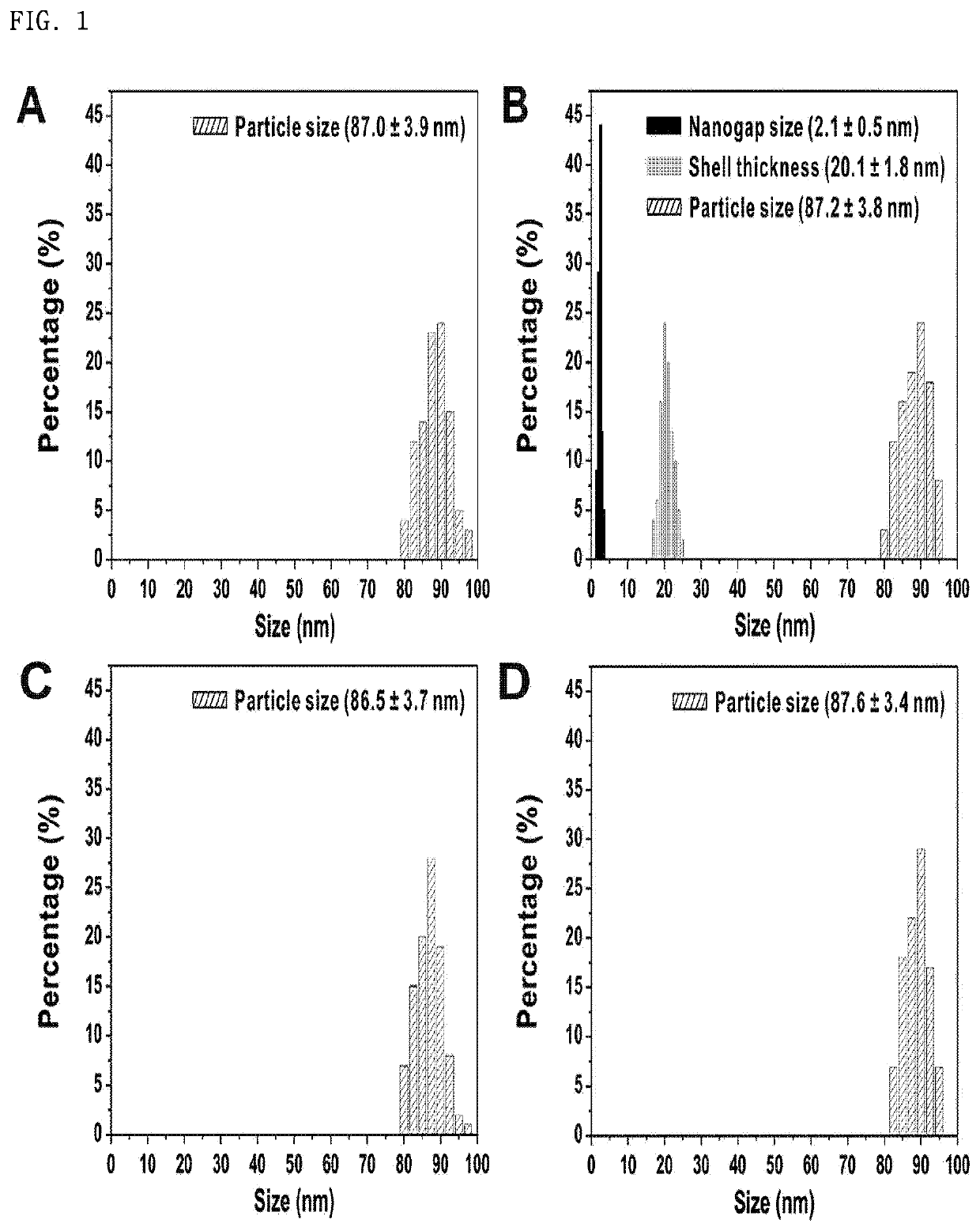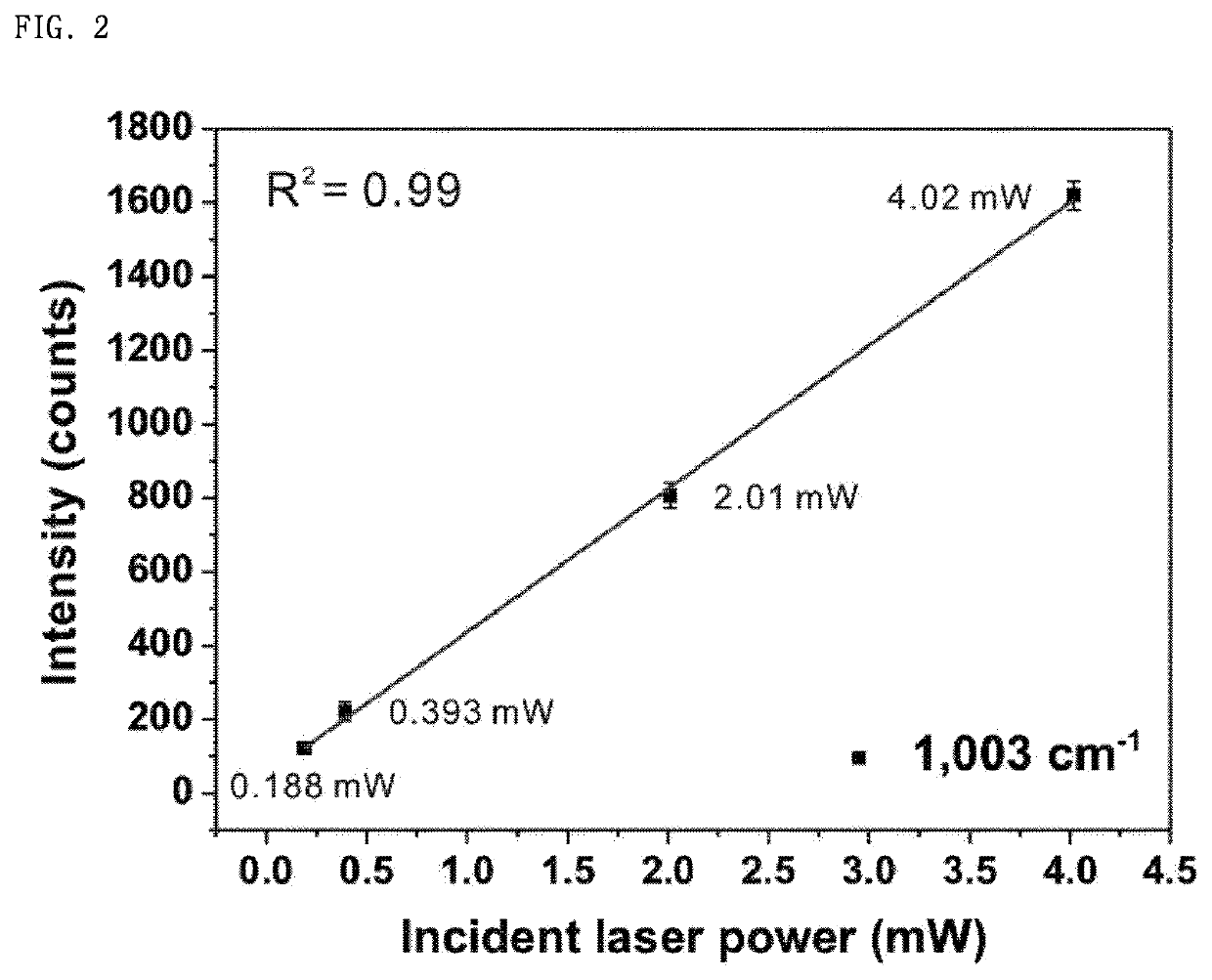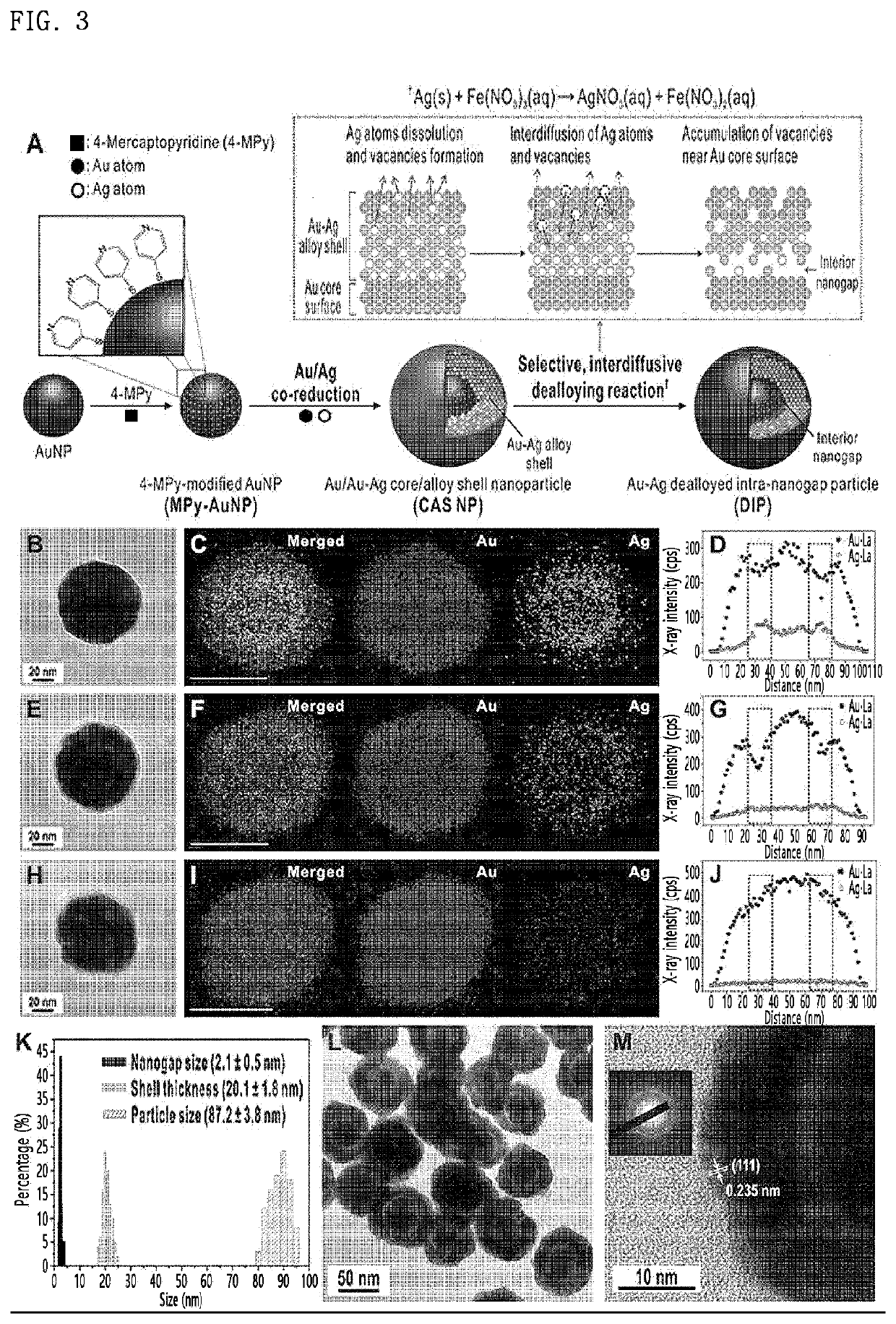Plasmonic nanoparticles with intra-nanogap produced by dealloying, method for preparing the same and use thereof
a nanoparticle and nanoparticle technology, applied in the field of plasmon, can solve the problems of time and cost, complicated synthetic complexity, and inability to reproduce untunable signals, and achieve the effect of effective use of ultrasensitive biosensing and/or bioimaging
- Summary
- Abstract
- Description
- Claims
- Application Information
AI Technical Summary
Benefits of technology
Problems solved by technology
Method used
Image
Examples
preparation example 1
Preparation of 4-MPy-Modified Au Nanoparticles
[0048]To attach the Raman reporter molecules (4-mercaptopyridine, 4-MPy) onto the AuNPs, 10 μL of an ethanol solution of 4-MPy (1 mM) was injected into 1 mL of a solution (100 pM) of the AuNPs (average diameter of 40 nm). The resulting mixture was shaken for 2 hours. Then, the 4-MPy-modified AuNPs formed (MPy-AuNPs) were washed with distilled water by centrifugation at 6,000 rpm for 10 minutes and redispersed in distilled water for further use.
PREPARATION EXAMPLE 2
Synthesis of Au / Au—Ag Core / Alloy Shell Nanoparticles
[0049]The Au / Au—Ag core / alloy shell NPs (CAS NPs) were synthesized using a known procedure with minor modifications (Nanoscale, 2016, 8: 11707-11717). Specifically, 200 μL of the MPy-AuNPs solution (100 pM) and 200 μL of a polyvinylpyrrolidone (PVP, Mw: about 40,000) solution (1 wt %) were mixed gently. Then, 50 μL of a AgNO3 solution (1 mM), 16 μL of a solution of NH4OH, and 150 μL of a solution of HAuCl4 (1 mM) were sequenti...
example 1
Synthesis of Au—Ag Dealloyed Intra-Nanogap Particles
[0051]The Au—Ag dealloyed intra-nanogap particles (DIPs) were synthesized by injecting Fe(NO3)3 as a Ag etchant into the CAS NPs prepared according to Preparation Example 2. Specifically, 100 μL of a solution of the CAS NPs (100 pM) was mixed with 100 μL of a PVP solution (1 wt %). Then, 125 μL of an Fe(NO3)3 solution (20 mM) was injected into the mixture with gentle shaking. The resulting mixture was shaken mildly at room temperature for 30 minutes, washed twice with distilled water by centrifugation at 6,000 rpm for 10 minutes, and redispersed in distilled water.
experimental example 1
Micro-Raman Spectroscopy
[0052]For the solution-state Raman analysis, a solution of the as-synthesized NPs (100 pM) was loaded into a capillary tube (soda lime glass; Cat. No. 2502, Kimble Chase, Vineland, N.J., USA). All Raman measurements were performed using a Renishaw inVia microscope equipped with 514 nm (5 mW), 633 nm (4 mW), and 785 nm (4 mW) excitation lasers, a 20×objective lens (NA=0.40, Leica), and a standard charge-coupled device (CCD) array detector (576×384 pixels; Peltier; cooled to −70° C.). The surface-enhanced Raman scattering (SERS) spectra were obtained using an acquisition period of 10 seconds and were recorded for wavenumbers of 800 cm−1 to 1,800 cm−1.
PUM
| Property | Measurement | Unit |
|---|---|---|
| height | aaaaa | aaaaa |
| wavelength | aaaaa | aaaaa |
| wavelength | aaaaa | aaaaa |
Abstract
Description
Claims
Application Information
 Login to View More
Login to View More - R&D
- Intellectual Property
- Life Sciences
- Materials
- Tech Scout
- Unparalleled Data Quality
- Higher Quality Content
- 60% Fewer Hallucinations
Browse by: Latest US Patents, China's latest patents, Technical Efficacy Thesaurus, Application Domain, Technology Topic, Popular Technical Reports.
© 2025 PatSnap. All rights reserved.Legal|Privacy policy|Modern Slavery Act Transparency Statement|Sitemap|About US| Contact US: help@patsnap.com



